Pufferfish
Family Tetraodontidae
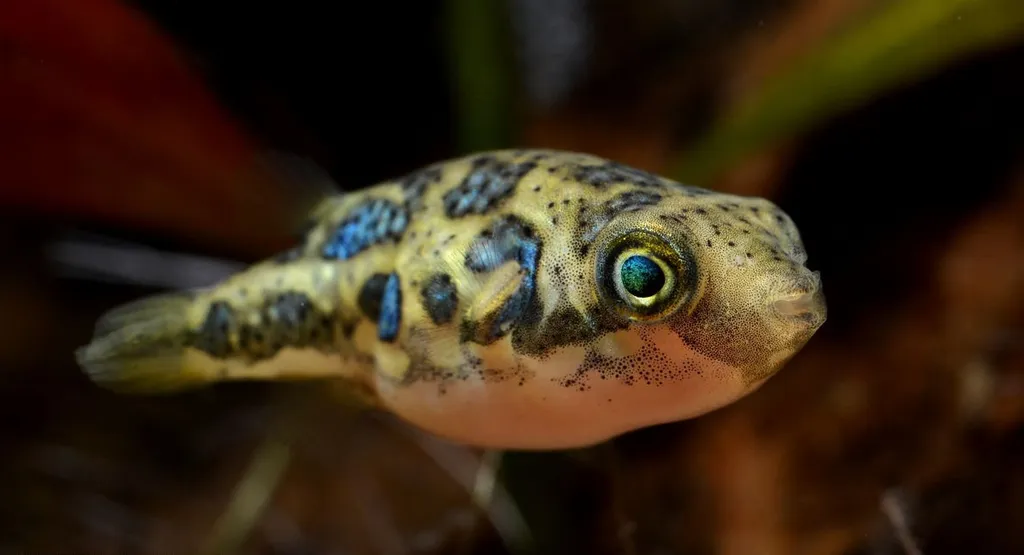
Photo by Parazelsus / CC BY 3.0 via Wikimedia Commons
Pufferfish (Tetraodontidae) are the chubby, clumsy helicopters of the reef. Unlike their spiky cousins (Porcupinefish), they have smooth or prickly skin without long visible spines. They are famous for their ability to inflate into a ball when threatened, turning a bite-sized snack into an unswallowable sphere. With their four fused teeth forming a powerful beak, they crunch through crabs and mollusks. While they look goofy and harmless, they carry one of the most potent neurotoxins on Earth— tetrodotoxin—making them a "look but don't touch" (and definitely don't eat) marvel.
🔬Classification
📏Physical Features
🌊Habitat Info
⚠️Safety & Conservation
Identification Guide

Photo by Bernard Spragg. NZ from Christchurch / CC0 via Wikimedia Commons
Field marks:
- Skin: Generally smooth or with tiny sandpaper-like prickles (no long spines).
- Beak: Four fused teeth (two upper, two lower) forming a distinct beak with a line down the middle.
- Movement: Hovers and pivots using pectoral fins; tail is often tucked away.
- Eyes: Independently moving eyes, often with iridescent layers.
- Mouth: Small but strong mouth with chisel-like teeth.
Differences from Similar Species
- Porcupinefish (Diodontidae): Have long, visible spines all over the body; pufferfish are smooth or have tiny hidden prickles.
- Boxfish: Body is a rigid, bony box; pufferfish are fleshy and can inflate.
- Filefish: Laterally compressed (flat like a pancake); pufferfish are round or sausage-shaped (like a hotdog).
Juvenile vs. Adult
Juveniles are often tiny replicas of adults but may inhabit shallower seagrass beds or mangroves for protection. Some species undergo dramatic color changes as they mature (e.g., the Map Puffer).
Top 10 Fun Facts about Pufferfish

Photo by Onderwijsgek / CC BY-SA 3.0 via Wikimedia Commons
1. The "Four-Toothed" Wonder
Their scientific name, Tetraodontidae, literally means "four teeth". These four teeth are fused into two plates (upper and lower), creating a powerful beak that never stops growing. They must constantly crunch on hard shells (crabs, clams, coral) to file their teeth down, or they’ll grow too long to eat!
2. The Original Airbag
Pufferfish were the first to invent the airbag. When frightened, they pump water (or air) into a highly elastic stomach, expanding up to 3 times their normal size. This isn't just visual; it makes them physically impossible for most predators to swallow.
3. Toxic Sushi
They harbor tetrodotoxin, a neurotoxin 1,200 times more deadly than cyanide. There is no known antidote. In Japan, only licensed chefs can prepare "Fugu" (pufferfish sashimi), leaving just a trace of toxin to numb the lips—a culinary game of Russian roulette.
4. Underwater Crop Circles
For years, divers in Japan were baffled by intricate, geometric circular patterns in the sand. It turns out, the male White-spotted Pufferfish spends days creating these "crop circles" using his fins to attract a mate. It’s the most artistic courtship display in the ocean.
5. Independent Eyes
Like chameleons, pufferfish can move their eyes independently. One eye can watch for predators above while the other scans for a crab below. This gives them a goofy, cross-eyed look that divers love.
6. Not All are Marine
While most are reef dwellers, some pufferfish (like the Mbu Puffer) live entirely in freshwater rivers in Africa and South America. They are popular but challenging aquarium pets due to their beak-maintenance needs.
7. The "Dog-Faced" Puffer
The Blackspotted Puffer is affectionately called the "Dog-faced Puffer" because it looks exactly like a wet puppy. It even begs for food! (But remember, don't feed them—they bite fingers thinking they are sausages).
8. Sleeping Habits
Pufferfish are heavy sleepers. At night, you can find them resting on the sand or tucked into a sponge. They often curl their tail around their body and dim their colors, looking like a resting stone.
9. Symbiotic Cleaners? No thanks.
Unlike many reef fish, pufferfish are often wary of cleaner wrasse. Why? Because some "cleaners" are actually False Cleanerfish (Fangblennies) that take a bite out of unsuspecting clients. Pufferfish skin is sensitive, so they don't take chances.
10. Dolphin High?
BBC documentaries have filmed young dolphins gently passing a pufferfish around like a beach ball. The trace amount of toxin released seems to put the dolphins in a trance-like state. While controversial, it suggests dolphins might be recreational drug users of the sea!
Diving & Observation Notes
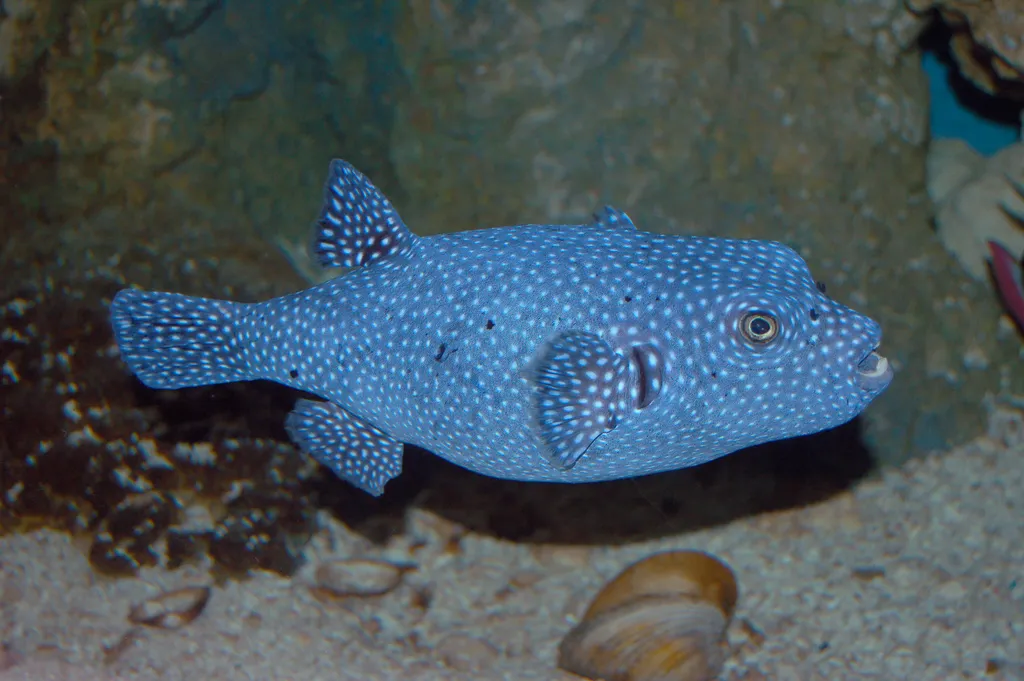
Photo by Photo by and (C)2007 Derek Ramsey (Ram-Man) via Wikimedia Commons
🧭 Finding Pufferfish
They are everywhere but blend in well. Look for a hovering, sausage-shaped silhouette near the bottom. Check sandy patches for the Map Puffer or White-spotted Puffer. Look under ledges for the massive Starry Puffer resting during the day.
🤿 Approach & Behavior
- Slow and Low: Approach slowly from the side or below. If you loom over them, they feel threatened.
- Curiosity: If you stay still, they often come to check you out. Their independent eyes will scan you up and down.
- The "Puff": NEVER harass them to make them puff. It causes immense stress and can kill them. A puffed puffer is a suffering puffer.
📸 Photo Tips
- Eye Contact: Focus on the eyes. Their iridescent patterns are stunning in macro shots.
- Portrait Mode: Get face-to-face for a "goofy smile" shot.
- Cleaning Stations: This is the best place to get a steady shot as they hover to be cleaned (if they trust the cleaner!).
⚠️ Ethics & Safety
- No Touch: Besides the stress, their skin can contain toxins.
- Fingers Away: Their beak can snap a crab shell in half; your finger is much softer.
🌏 Local Guide Nuggets
- Japan (Amami Oshima): The only place to see the famous underwater crop circles made by the pufferfish.
- Red Sea: Home to the Masked Puffer, which looks like a raccoon and is very bold.
- Indonesia/Philippines: Look for the tiny Valentini Puffer (Saddle Puffer) in the shallows—it’s cute but mimics a toxic filefish!
Best Places to Dive with Pufferfish
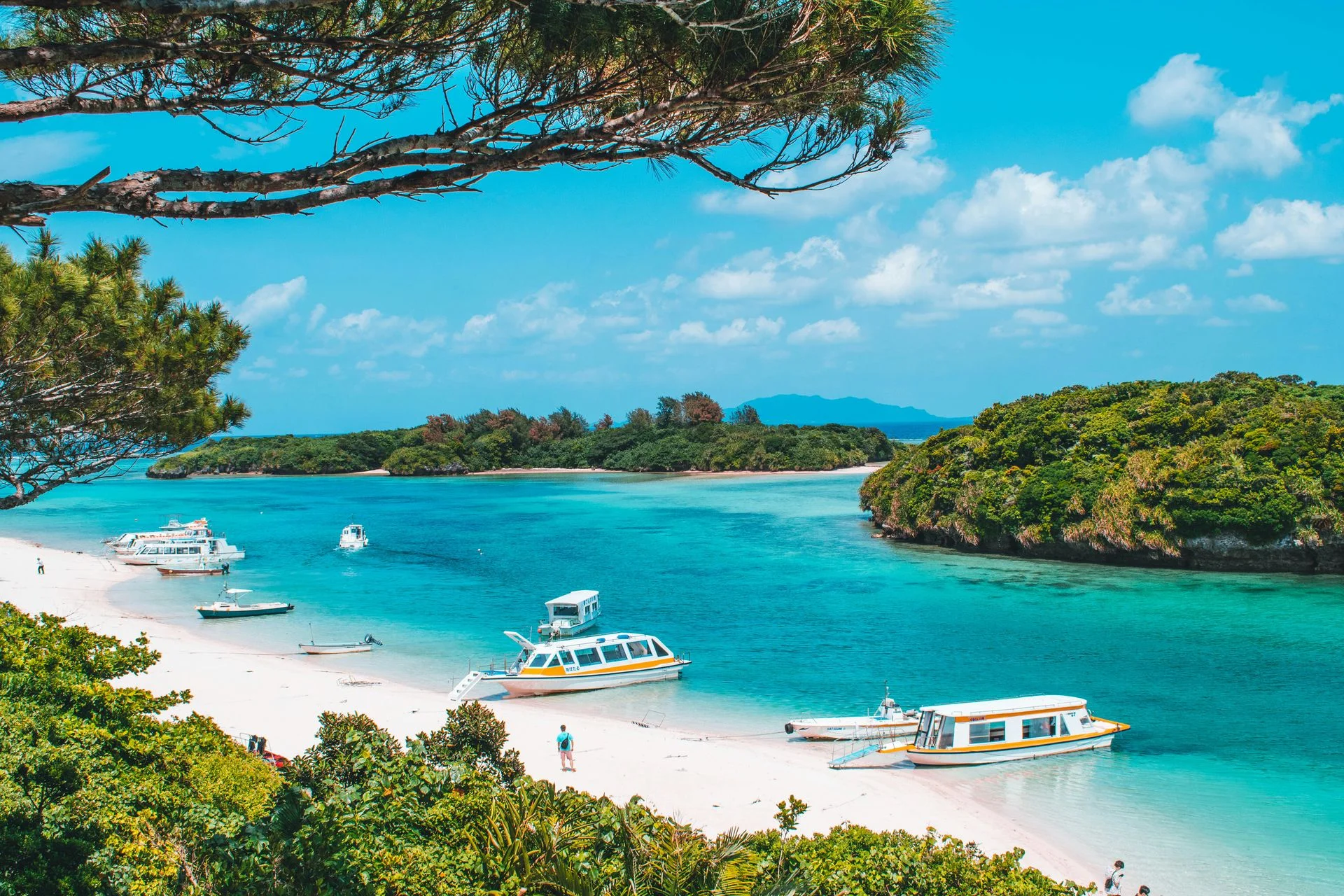
Okinawa
Straddling the subtropical Ryūkyū chain in Japan’s far south, Okinawa Prefecture is a mosaic of islands offering everything from shallow coral gardens to deep wrecks and wild drift dives. The main island provides easy access to the vibrant reefs of the Kerama National Park, where Tokashiki and Zamami Islands boast pristine hard corals, sea fans and more turtles than you can count. Just offshore, Cape Manza’s Dream Hole drops through a chimney into a colourful cavern system teeming with soldierfish, angelfish and feather stars. Further north, history buffs can dive the 100‑metre USS Emmons, a WWII destroyer resting intact at 35–40 m. Closer to shore, Cape Maeda’s Blue Cave offers an easy swim‑through with magical blue light – but expect crowds. Away from the main island, Okinawa’s outer islands extend the experience: Ishigaki’s Manta Scramble (April–Nov) promises manta ray ballets, Yonaguni’s currents bring hammerhead sharks in winter, and Miyako’s caves and tunnels deliver topography diving at its finest. Whether you crave reef fish, big pelagics, swim‑throughs or macro critters, Okinawa’s warm, clear waters offer a Japanese diving adventure for every level of diver.
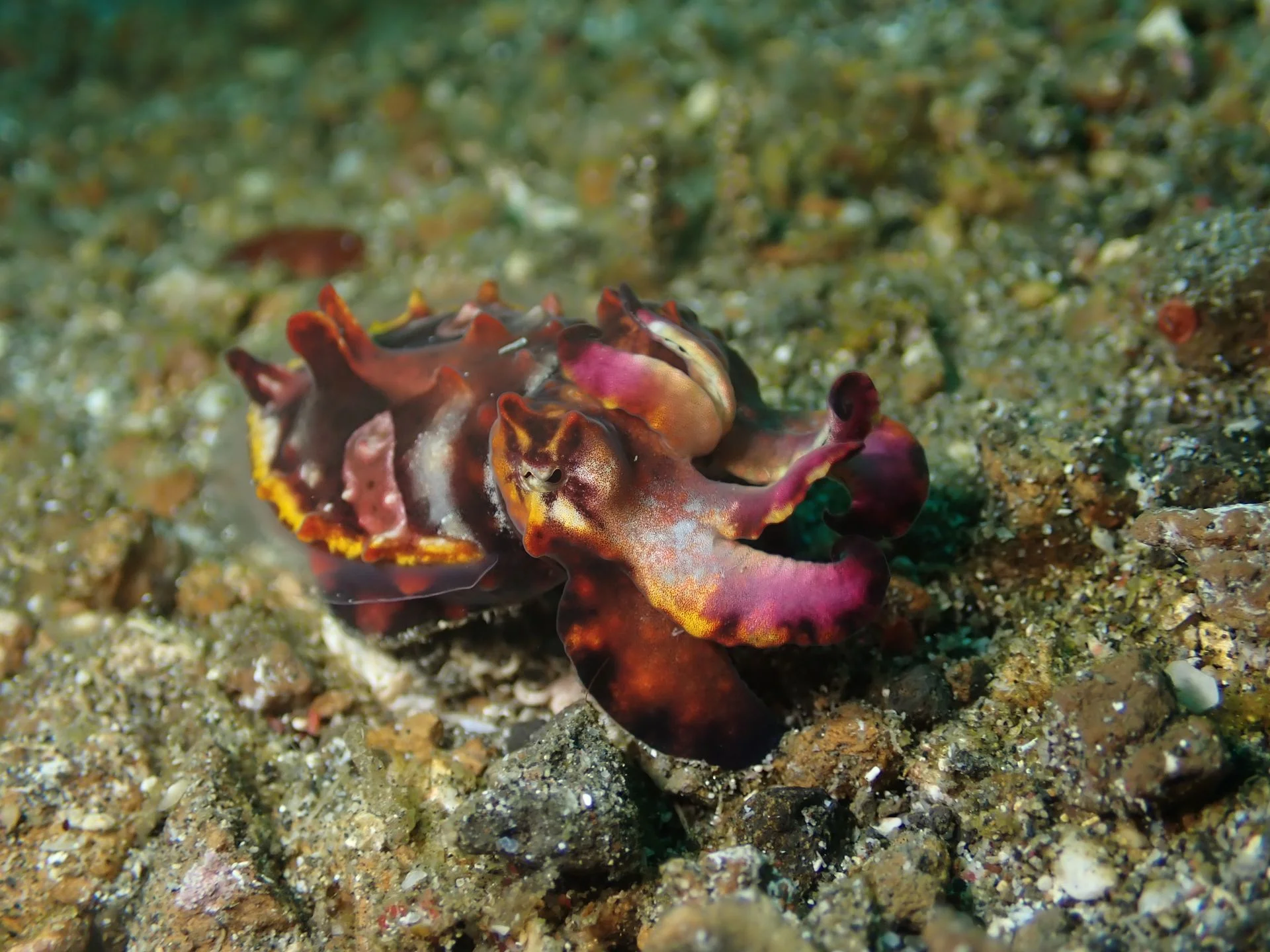
Lembeh
The Lembeh Strait in North Sulawesi has become famous as the muck‑diving capital of the world. At first glance its gently sloping seabed of black volcanic sand, rubble and discarded debris looks bleak. Look closer and it is teeming with weird and wonderful life: hairy and painted frogfish, flamboyant cuttlefish, mimic and blue‑ringed octopuses, ornate ghost pipefish, tiny seahorses, shrimp, crabs and a rainbow of nudibranchs. Most dives are shallow and calm with little current, making it an ideal playground for macro photographers. There are a few colourful reefs for a change of scenery, but Lembeh is all about searching the sand for critter treasures.
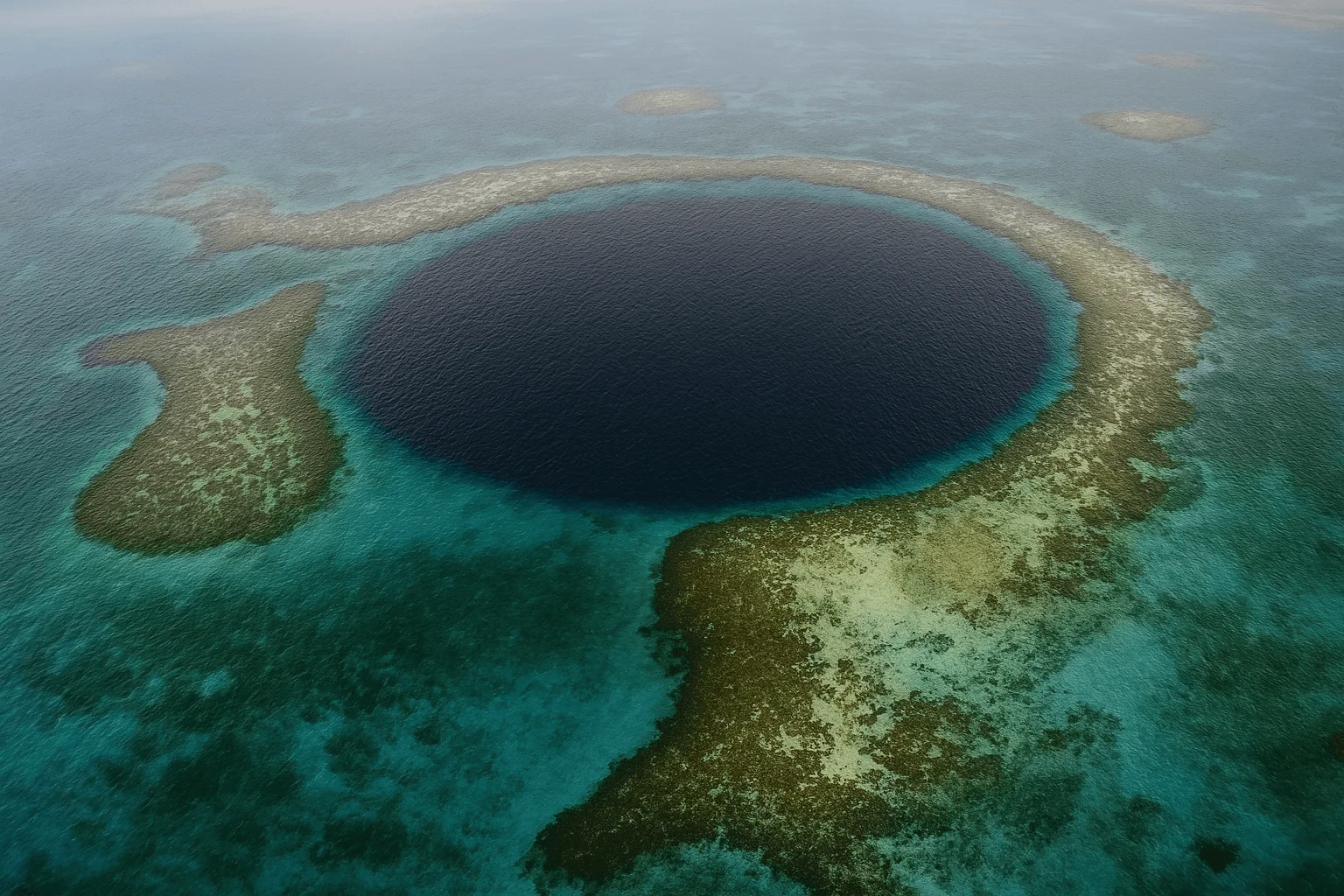
Dahab
Dahab is a laid‑back Bedouin village on Egypt’s Sinai Peninsula that has become a magnet for divers and free divers alike. The fringing reef starts just a few metres from the beach, dropping into a coral‑covered plateau and steep walls cut by canyons and chimney‑like holes. From beginner‑friendly shore entries at Lighthouse and Coral Garden to the legendary Blue Hole and Canyon, Dahab offers reef gardens full of anthias, butterflyfish and turtles as well as thrilling drift dives and deep blue walls. Year‑round sunshine, clear desert air and a bohemian vibe make it easy to spend weeks exploring the many dive sites along the shoreline and by boat.
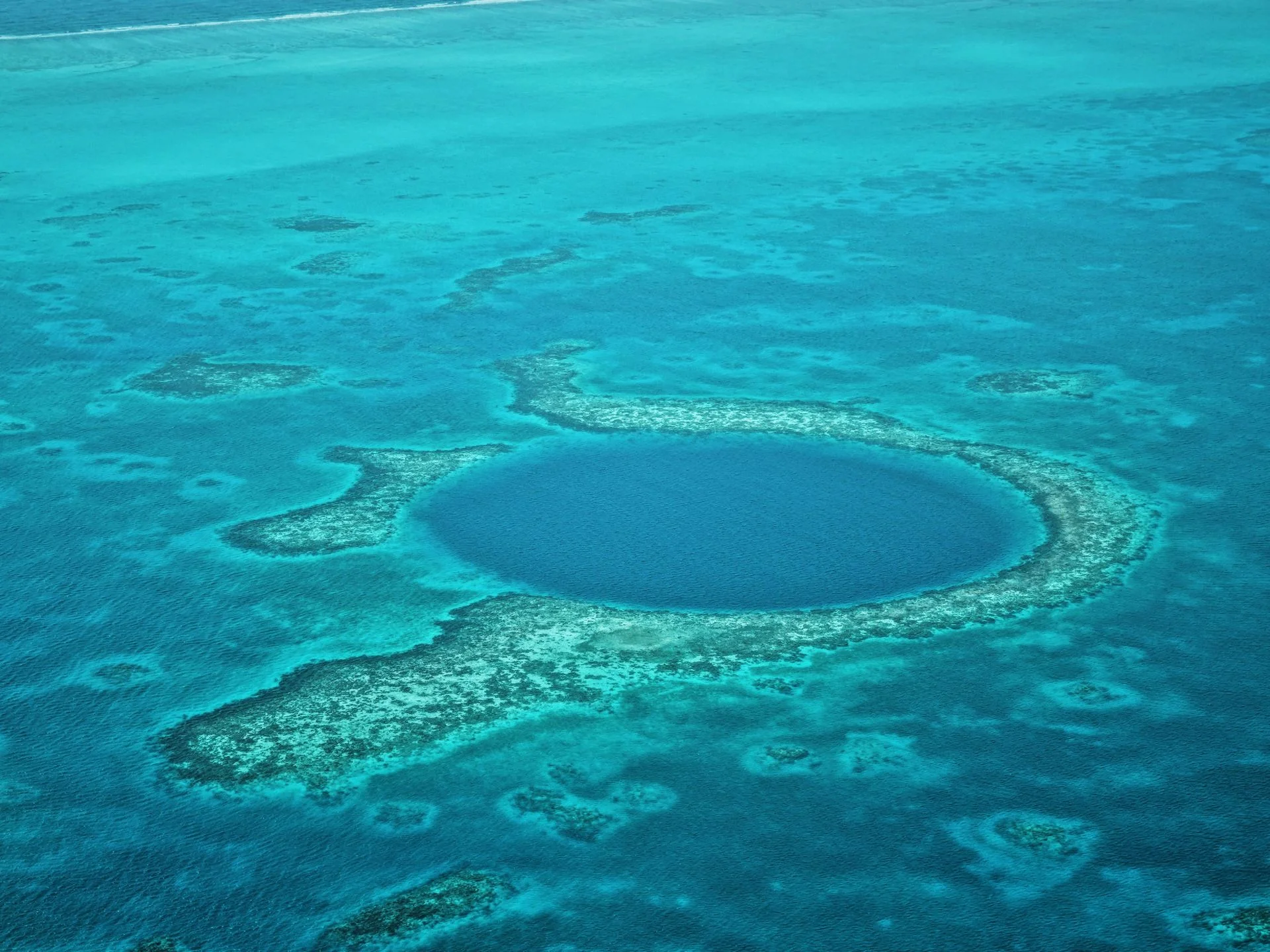
Belize
Straddling the Caribbean and Central America, Belize is home to the world’s second‑largest barrier reef and a string of offshore atolls. Warm, clear water and a relaxed tropical vibe make it a favourite with divers of all levels. The flagship attraction is the Great Blue Hole, a 300‑m‑wide limestone sinkhole plunging to 124 m, but Belize’s real magic lies in its walls and coral gardens. Turneffe Atoll and Lighthouse Reef teem with reef sharks, turtles, eagle rays and massive barrel sponges. Gladden Spit hosts whale sharks from April to June, while Hol Chan Marine Reserve and Shark Ray Alley offer easy snorkelling with nurse sharks and stingrays. Whether you’re a beginner completing your first course or an experienced diver chasing pelagics, Belize delivers with friendly people and laid‑back island life.
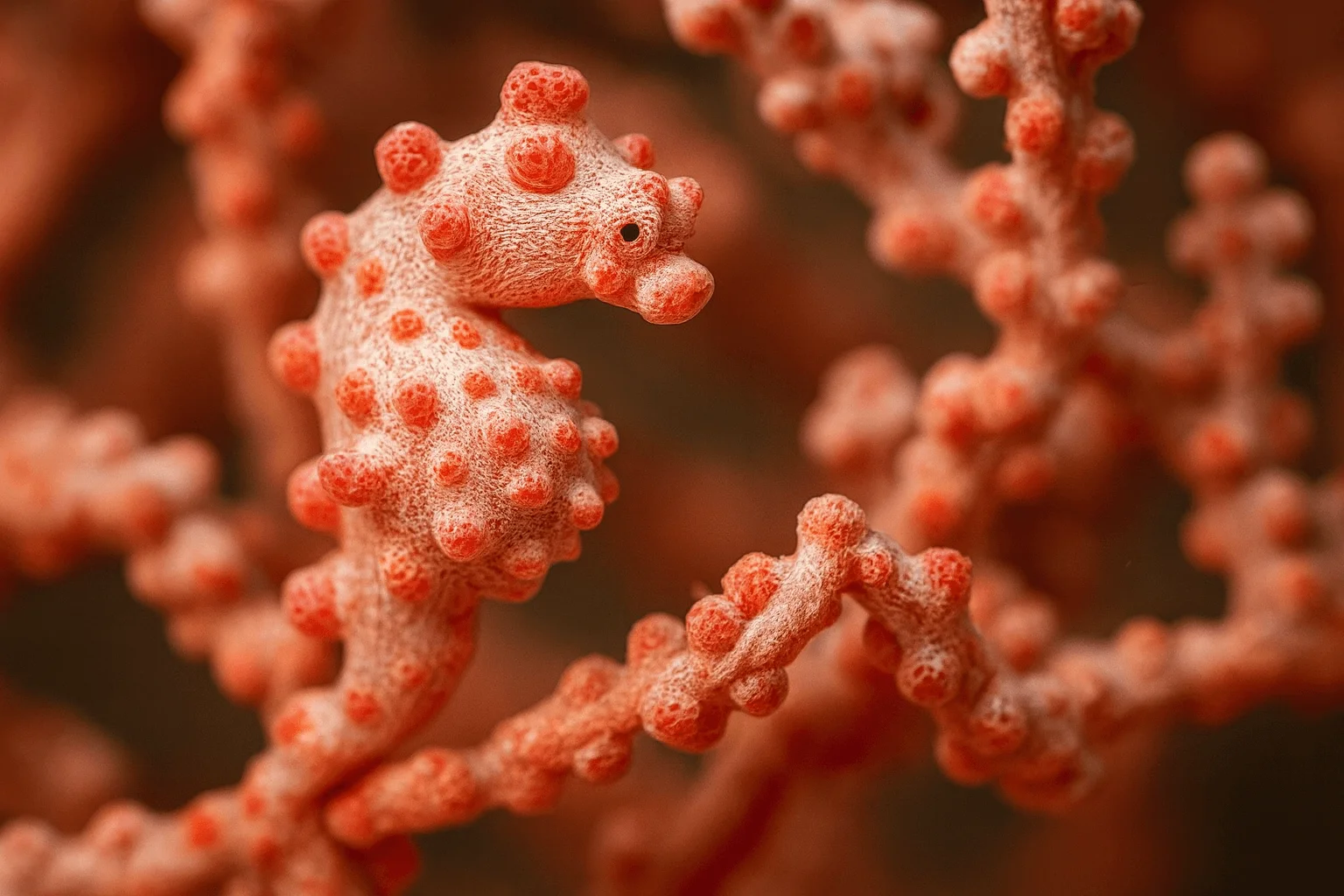
Anilao
Anilao, a small barangay in Batangas province just two hours south of Manila, is often called the macro capital of the Philippines. More than 50 dive sites fringe the coast and nearby islands, offering an intoxicating mix of coral‑covered pinnacles, muck slopes and blackwater encounters. Critter enthusiasts come for the legendary muck dives at Secret Bay and Anilao Pier, where mimic octopuses, blue‑ringed octopuses, wonderpus, seahorses, ghost pipefish, frogfish and dozens of nudibranch species lurk in the silt. Shallow reefs like Twin Rocks and Cathedral are covered in soft corals and teem with reef fish, while deeper sites such as Ligpo Island feature gorgonian‑covered walls and occasional drift. Because Anilao is so close to Manila and open year‑round, it’s the easiest place in the Philippines to squeeze in a quick diving getaway.